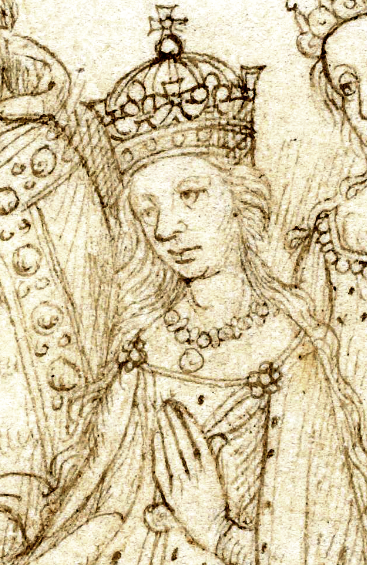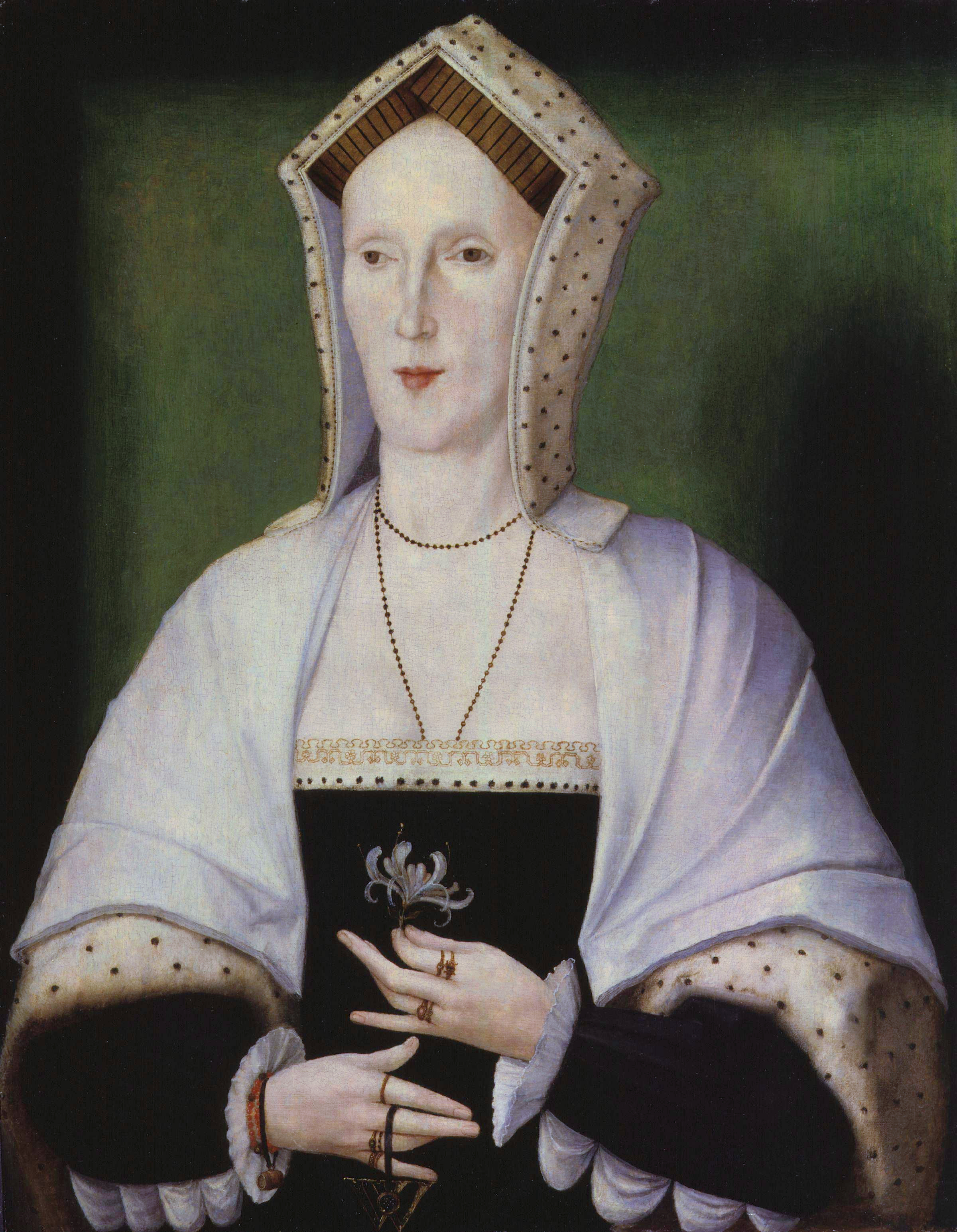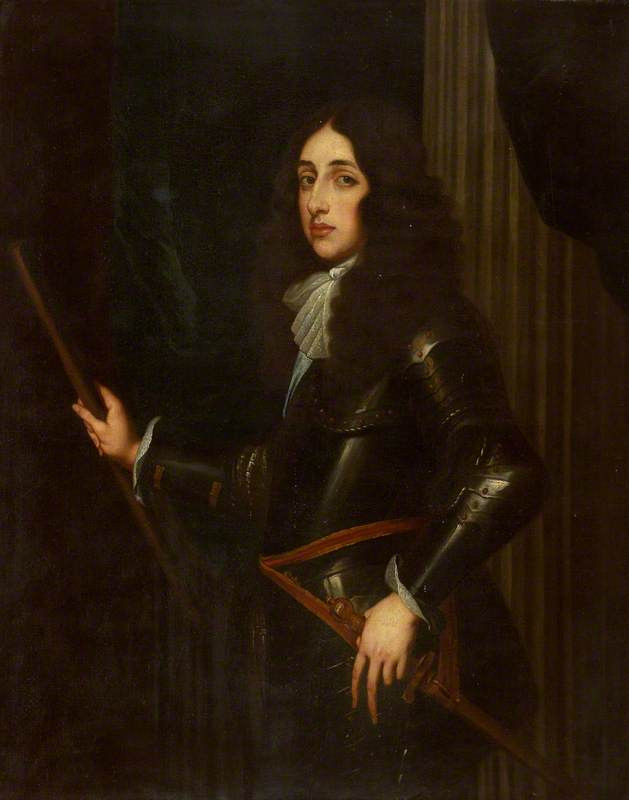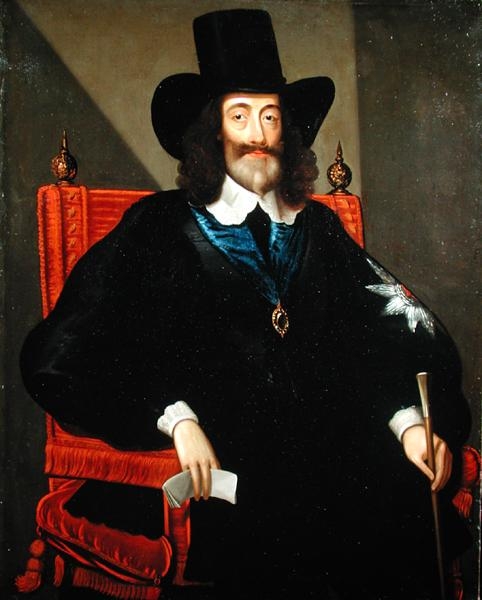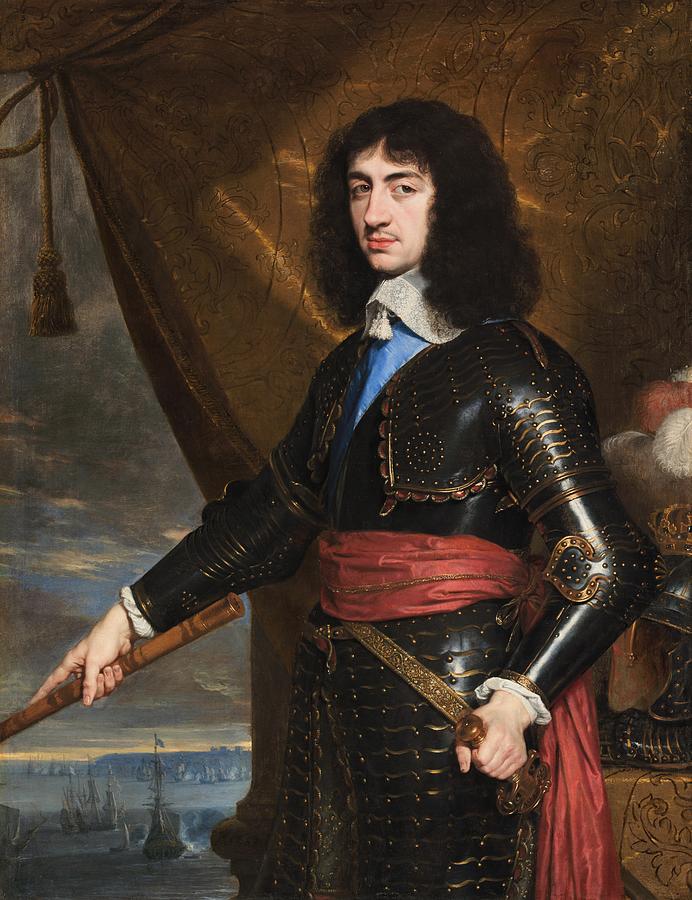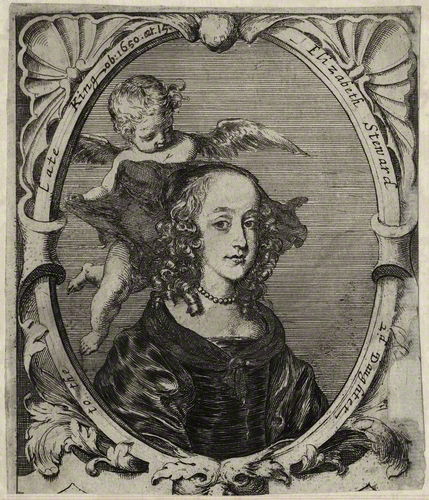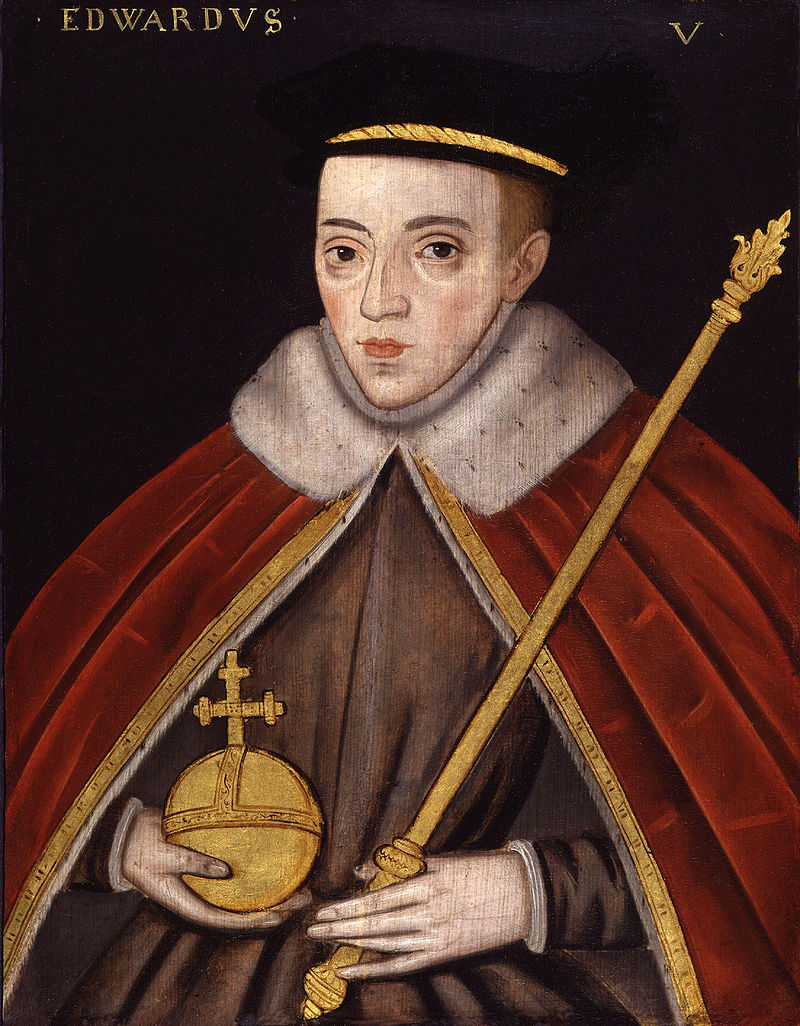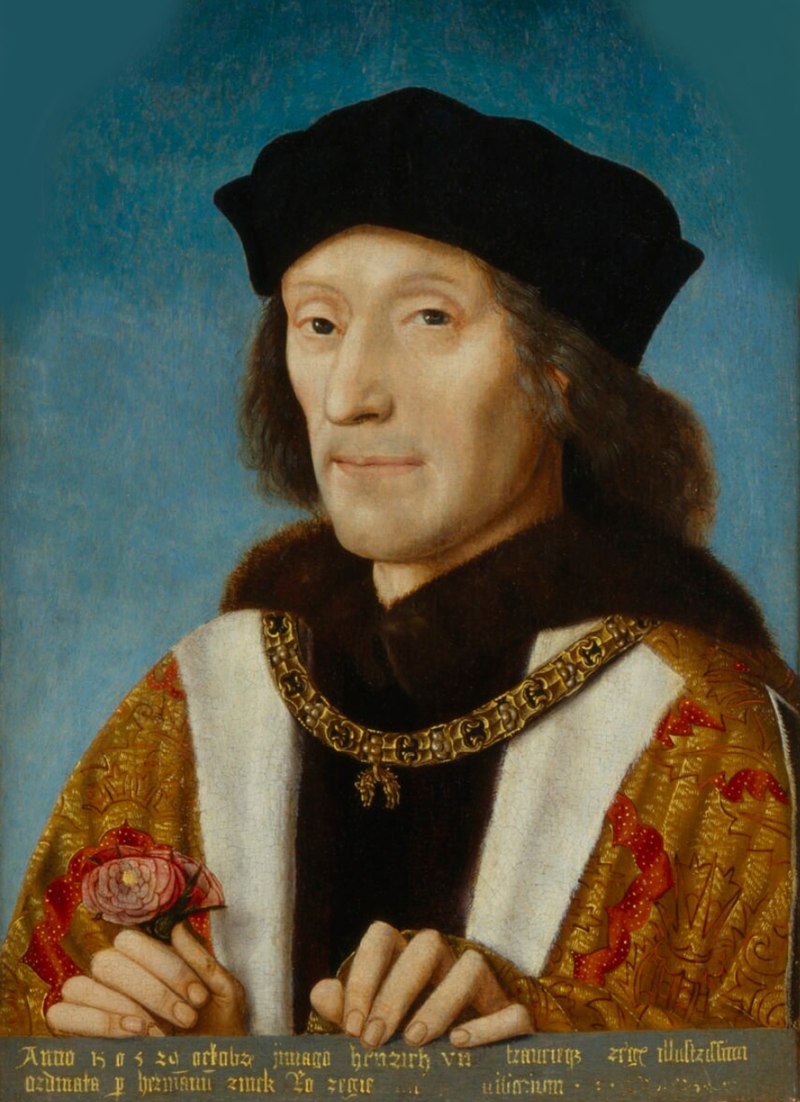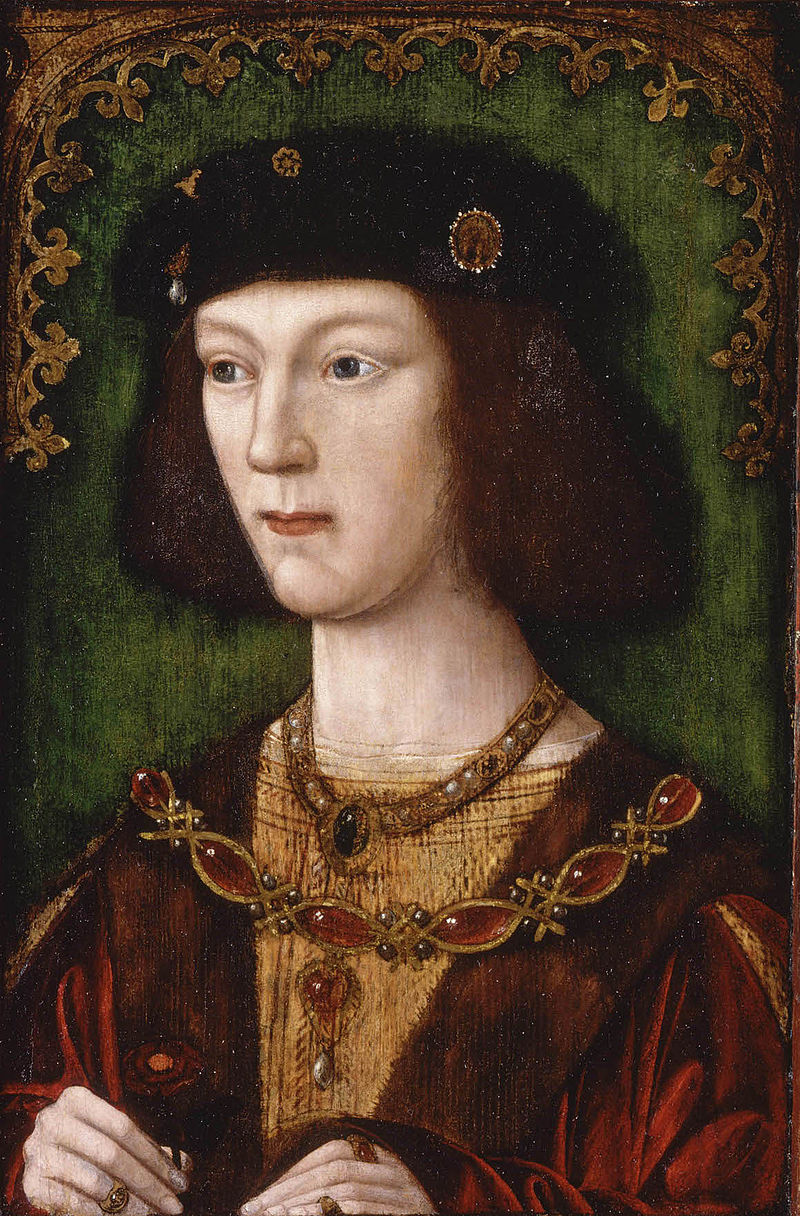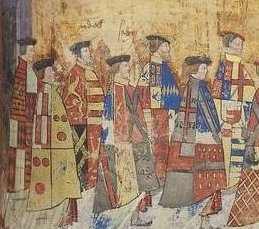by Susan Flantzer
© Unofficial Royalty 2023

Archibald Douglas, 6th Earl of Angus; Credit – Wikipedia
Archibald Douglas, 6th Earl of Angus, a Scottish nobleman active during the reigns of James V, King of Scots and Mary, Queen of Scots, was a leader of the Anglophile faction in Scotland in the early decades of the 16th century, seizing power several times. In his later years, Archibald was once again a Scottish patriot. He was the second of the three husbands of Margaret Tudor, Dowager Queen of Scots, daughter of King Henry VII of England, sister of King Henry VIII of England, and the widow of James IV, King of Scots. Through their daughter Lady Margaret Douglas, Archibald and Margaret are the grandparents of Henry Stuart, Lord Darnley, the first cousin and second husband of Mary, Queen of Scots, the great-grandparents of James VI, King of Scots, later also James I, King of England, and the ancestors of the British royal family and most other European royal families.

Ruins of Douglas Castle, the birthplace of Archibald Douglas; Credit – By User:Supergolden – Taken by User:Supergolden, CC BY-SA 3.0, https://commons.wikimedia.org/w/index.php?curid=1082856
Born November 29, 1489, at Douglas Castle in Douglasdale, Lanarkshire, Scotland, Archibald Douglas, 6th Earl of Angus was the eldest of the seven children and the eldest of the three sons of George Douglas, Master of Angus, who was killed at the Battle of Flodden Field, and Elizabeth Drummond. His paternal grandparents were Archibald Douglas, 5th Earl of Angus and Elizabeth Boyd. Archibald’s maternal grandparents were John Drummond, 1st Lord Drummond and Elizabeth Lindsay.
Archibald had six younger siblings:
- Sir George Douglas of Pittendreich (circa 1493 – 1552), married Elizabeth Douglas, had three children
- William Douglas, Prior of Coldingham and Abbot of Holyrood (circa 1493 – 1528)
- Elizabeth Douglas, married John Hay, 3rd Lord Yester, had two children
- Alison Douglas (1480 – 1530), married (1) Robert Blackadder, had one daughter, killed at the Battle of Flodden Field (2) David Home, 4th Baron Wedderburn, had four children
- Janet Douglas (circa 1498 – 1537), married (1) John Lyon, 6th Lord Glamis, had four children (2), Archibald Campbell of Skipnish, had one son, Janet was executed by burning for witchcraft during the reign of James V, King of Scots
- Margaret Douglas married Sir James Douglas, 7th of Drumlanrig, had three children, divorced
In 1509, when he was about 20 years old, Archibald married Margaret Hepburn, daughter of Patrick Hepburn, 1st Earl of Bothwell and his second wife Margaret Gordon. The marriage was childless and Margaret died four years later.

Margaret Tudor and her first husband James IV, King of Scots; Credit – Wikipedia
On January 24, 1502, England and Scotland concluded the Treaty of Perpetual Peace, agreeing to end the two hundred years of warfare between England and Scotland. As part of the treaty, a marriage was arranged between 28-year-old James IV, King of Scots and twelve-year-old Margaret Tudor, daughter of King Henry VII of England. A proxy marriage was held on January 25, 1503, at Richmond Palace in England with Patrick Hepburn, 1st Earl of Bothwell, Archibald’s future father-in-law, standing in for James IV. In June 1503, Margaret left London to make the journey to Scotland. Margaret and James IV, King of Scots were married in person on August 8, 1503, at Holyrood Abbey in Edinburgh, Scotland.
Margaret Tudor and James IV had two stillborn daughters and four sons, but only one of their sons survived infancy, the future James V, King of Scots. In 1509, Margaret’s father King Henry VII died and her brother King Henry VIII came to the throne. Henry VIII did not have his father’s diplomatic patience and was heading toward a war with France. James IV was committed to his alliance with France and invaded England. Ultimately, the Scots were defeated at the Battle of Flodden Field near Branxton, Northumberland, England on September 9, 1513, and Margaret’s husband, 30-year-old James IV, King of Scots was killed in the battle. Margaret’s seventeen-month-old son succeeded his father as James V, King of Scots. James V was the father of Mary, Queen of Scots and therefore, Margaret Tudor was her grandmother.

Margaret Tudor; Credit – Wikipedia
Under the terms of James IV’s will, Margaret was the Regent of Scotland for her son as long as she did not remarry. Margaret sought an ally with the pro-English Clan Douglas. On August 6, 1514, Margaret secretly married Archibald Douglas, 6th Earl of Angus. The marriage stirred up the nobles and the opposition of the faction supporting French influence in Scotland. Civil war broke out, and Margaret lost the regency to John Stewart, 2nd Duke of Albany, grandson of James II, King of Scots. Margaret and Douglas escaped to England where she gave birth to their only child at Harbottle Castle in Northumberland, England:
- Lady Margaret Douglas (1515 – 1578), married Matthew Stewart, 4th Earl of Lennox, had two sons including Henry Stuart, Lord Darnley who married his first cousin Mary, Queen of Scots. They were the parents of James VI, King of Scots who succeeded to the English throne upon the death of Queen Elizabeth I of England as King James I of England.
Sometime after the birth of their daughter, Margaret and her second husband Archibald went to London where they were well treated by her brother King Henry VIII of England, and lived in Scotland Yard, the traditional residence of the Scottish diplomats and Scottish kings when they visited London. After returning to Scotland in 1517, Archibald and Margaret became estranged. Archibald began a relationship with Lady Jane de Truquare. They had one daughter:
- Lady Janet Douglas (circa 1525 – 1552), married Patrick Ruthven, 3rd Lord Ruthven, had eight children

Newark Castle, now in ruins; Credit – By Walter Baxter, CC BY-SA 2.0, https://commons.wikimedia.org/w/index.php?curid=13836998
Archibald took over Margaret’s dower estate Newark Castle near Selkirk, Selkirkshire, Scotland, and settled there with his mistress and illegitimate daughter. It greatly angered Margaret that Archibald had confiscated her property and used her dowry income as Dowager Queen of Scots. Archibald tried to seize power, causing a conflict with James Hamilton, 1st Earl of Arran. This escalated to armed skirmishes over the control of Edinburgh and threatened to escalate into civil war. John Stewart, 2nd Duke of Albany, Regent of Scotland regained power, and Archibald was charged with treason and sent to France as a prisoner. However, within two years, he managed to escape to England.
There was an Anglophile sentiment among some Scottish nobility, supported by King Henry VIII of England. This allowed Archibald Douglas to carry out a coup d’état in 1525. Thirteen-year-old James V, King of Scots was placed under Archibald’s supervision in Edinburgh. Archibald’s relatives and associates were appointed to high political offices. This caused discontent among the Scottish nobility but all attempts to rebel against Archibald were crushed.
Meanwhile, Margaret Tudor transferred her affections to Henry Stewart, 1st Lord Methven. On March 11, 1527, Pope Clement VII granted Margaret a divorce from Archibald Douglas, 6th Earl of Angus to the consternation of her brother King Henry VIII of England who insisted that marriage was “divinely ordained” and protested against the “shameless sentence sent from Rome.” Ironically, several years later Henry VIII would seek to end his marriage with Catherine of Aragon and marry Anne Boleyn.
Margaret and Henry Stewart, 1st Lord Methven were married on March 3, 1528. The marriage produced a daughter Dorothea Stewart, born circa April 1528, who died in infancy. At the end of March 1528, Margaret and Methven were besieged by Archibald and some of his Douglas relatives at Stirling Castle in Stirling, Scotland. A few weeks later, James V, King of Scots escaped from custody and took refuge at Stirling Castle. James V issued an order that his former stepfather Archibald Douglas, 6th Earl of Angus and all the Douglases were forbidden to come within seven miles of him.

The ruins of Tantallon Castle; Credit -By Stephencdickson – Own work, CC BY-SA 4.0, https://commons.wikimedia.org/w/index.php?curid=95033608
Archibald was attainted (lost his titles) and his lands were confiscated. As a condition of a truce between England and Scotland, he surrendered Tantallon Castle near North Berwick, in East Lothian, Scotland, his family’s 14th-century fortress. In May 1529, Archibald sought refuge with King Henry VIII in England. He took an oath of allegiance to Henry VIII and obtained an allowance and a promise that Henry VIII would work on restoring his title and lands.
James V, King of Scots took revenge against many Douglases remaining in Scotland. Archibald’s sister Janet, Lady Glamis, was summoned to answer a charge of communicating with her brothers, and when she failed to appear, her estates were forfeited. In 1537, James V had Janet accused of witchcraft against him, although it was clear that the accusations were false. To gain “evidence”, James V had Janet’s family and servants tortured. Janet was convicted and burned at the stake on July 17, 1537, outside of Edinburgh Castle.
On her deathbed in 1541, Archibald’s divorced wife Margaret Tudor asked Archibald Douglas to forgive her for divorcing him, telling him that he was her lawful husband and their marriage was valid. It is not clear whether her motivation was regret or an attempt to ensure the legitimacy of her daughter Margaret Douglas to preserve her position in the line of succession to the English throne.
Archibald remained in England, joining in attacks upon the Scots at the border. James V refused Henry VIII’s demands to restore Archibald’s titles and land and continued to suppress the Douglas faction. Despite Archibald living in England, Henry VIII kept the guardianship of his daughter Margaret Douglas who was raised in the English royal household with her first cousin, the future Queen Mary I of England. Margaret and Mary remained lifelong friends.
In 1542, upon the death of thirty-year-old James V, King of Scots, Archibald returned to Scotland, his titles and lands restored, with instructions from King Henry VIII of England to negotiate a marriage between James V’s successor, the infant Mary, Queen of Scots, and Henry VIII’s five-year-old son and heir, the future King Edward VI of England. The marriage was negotiated but because of the English hostilities, Scotland eventually abandoned the possibility of an English marriage.
In 1543, Archibald married Margaret Maxwell, daughter of Robert Maxwell, 5th Lord Maxwell. They had one son James Douglas, Master of Angus who died when he was three years old. In the same year, Edward Seymour, 1st Duke of Somerset’s Burning of Edinburgh during the Rough Wooing damaged Archibald’s land and this caused him to give up any allegiance to England and join the anti-English faction. Archibald allied with James Hamilton, 2nd Earl of Arran, Regent of Scotland, during the early part of Mary, Queen of Scots’ reign. Archibald gave his support to the diplomatic mission sent to France to offer a marriage between Mary, Queen of Scots (the first of Mary’s three marriages) and François, Dauphin of France (the future King François II), the son and heir of King Henri II of France. In July 1544, Archibald was appointed commander of the Scottish troops on the border with England, and his troops defeated the English at the Battle of Ancrum Moor in 1545.
Archibald Douglas, 6th Earl of Angus died, aged 67, on January 22, 1557, at Tantallon Castle near North Berwick, East Lothian, Scotland. He may have been buried in Abernethy, Perthshire, Scotland but his burial information is uncertain.
This article is the intellectual property of Unofficial Royalty and is NOT TO BE COPIED, EDITED, OR POSTED IN ANY FORM ON ANOTHER WEBSITE under any circumstances. It is permissible to use a link that directs to Unofficial Royalty.
Works Cited
- Archibald Douglas, 6th Earl of Angus (2022) geni_family_tree. Available at: https://www.geni.com/people/Archibald-Douglas-6th-Earl-of-Angus/6000000003232538566 (Accessed: February 23, 2023).
- Archibald Douglas, 6th Earl of Angus (2023) Wikipedia. Wikimedia Foundation. Available at: https://en.wikipedia.org/wiki/Archibald_Douglas,_6th_Earl_of_Angus (Accessed: February 23, 2023).
- DeLisle, Leanda. (2013) Tudor – Passion, Manipulation, Murder. New York: PublicAffairs.
- Flantzer, S. (2016) James V, King of Scots, Unofficial Royalty. Available at: https://www.unofficialroyalty.com/james-v-king-of-scots/ (Accessed: February 23, 2023).
- Flantzer, Susan. (2016) Margaret Tudor, Queen of Scots, Unofficial Royalty. Available at: https://www.unofficialroyalty.com/margaret-tudor-queen-of-scotland/ (Accessed: February 23, 2023).





